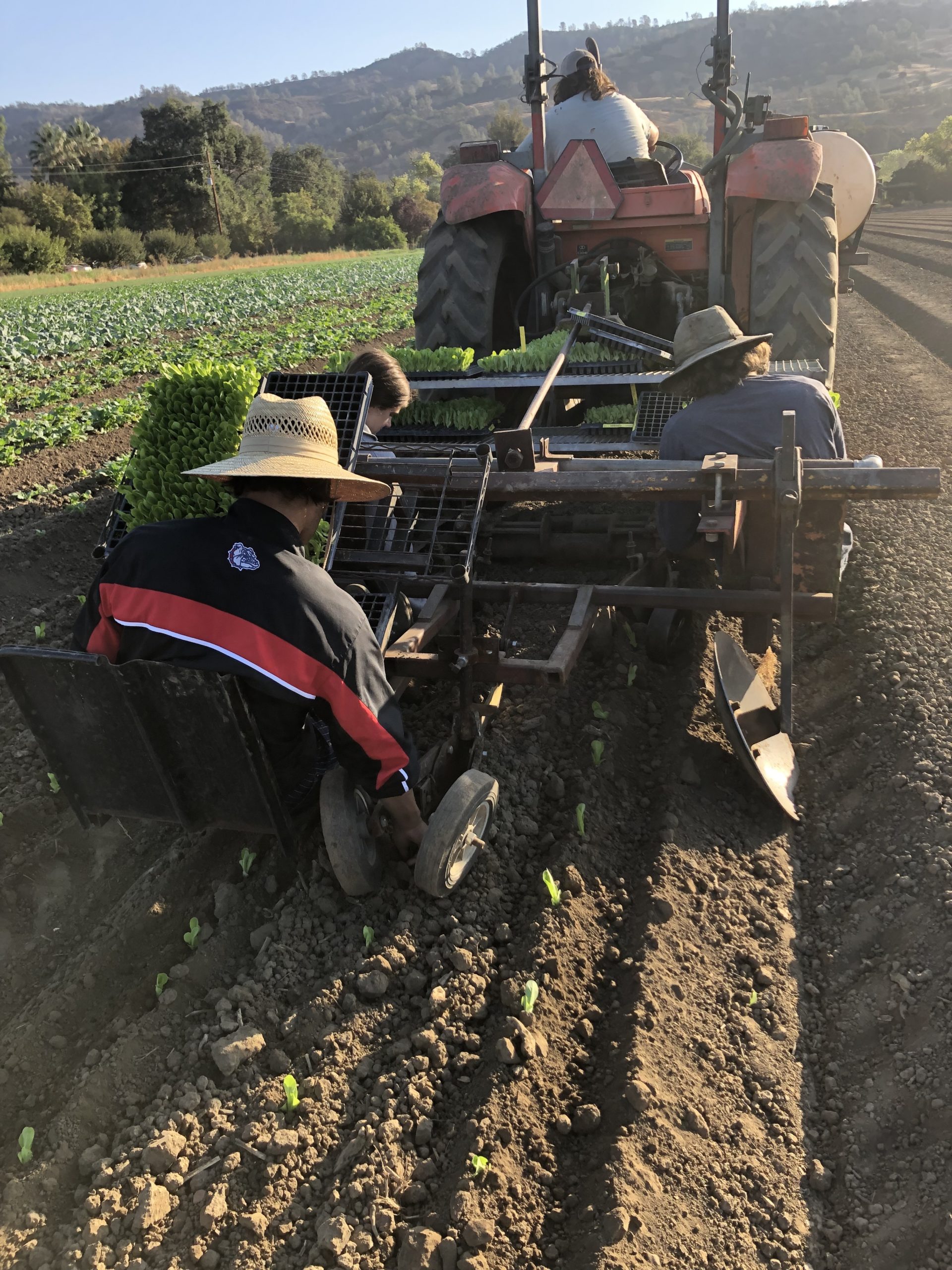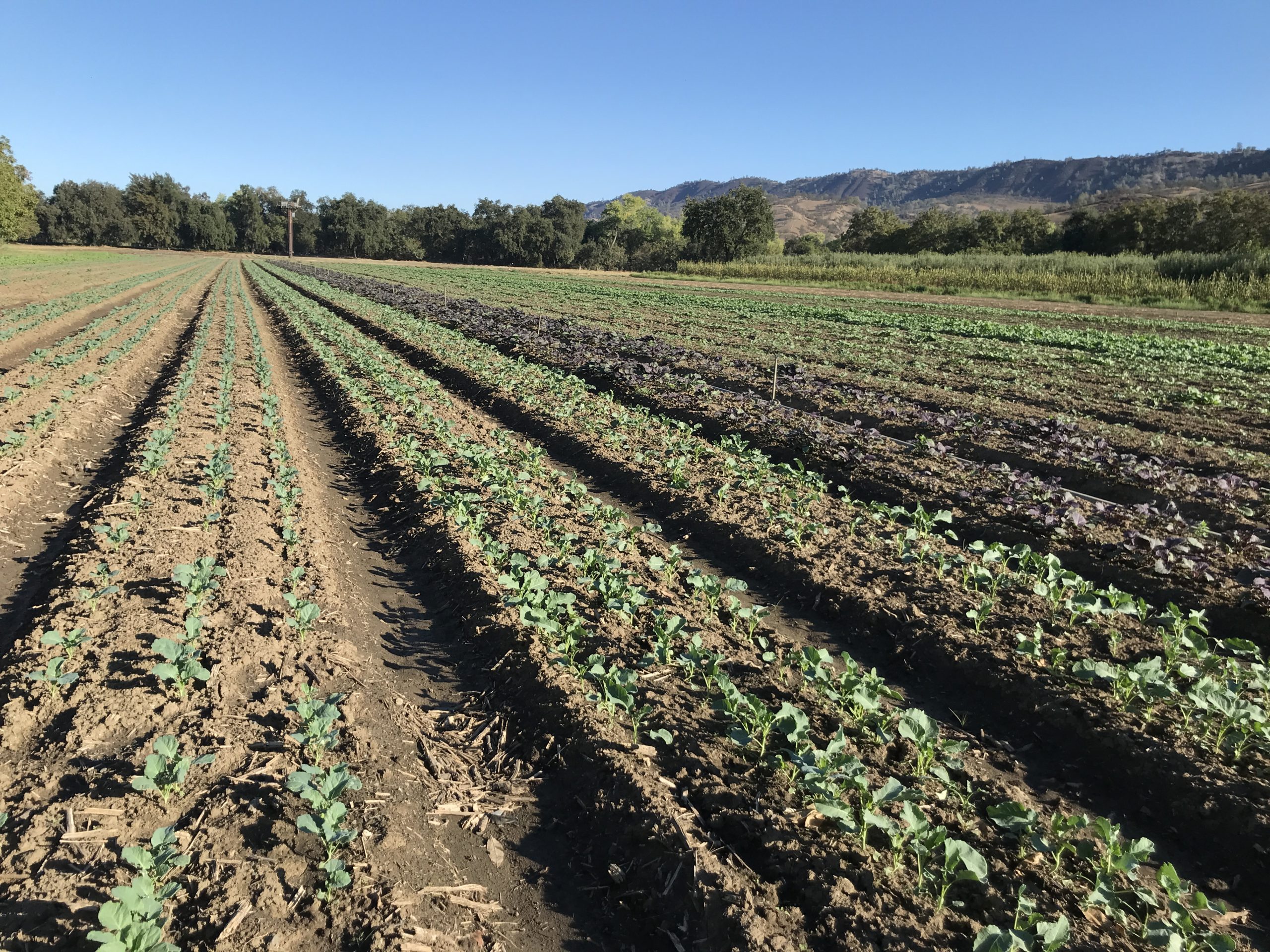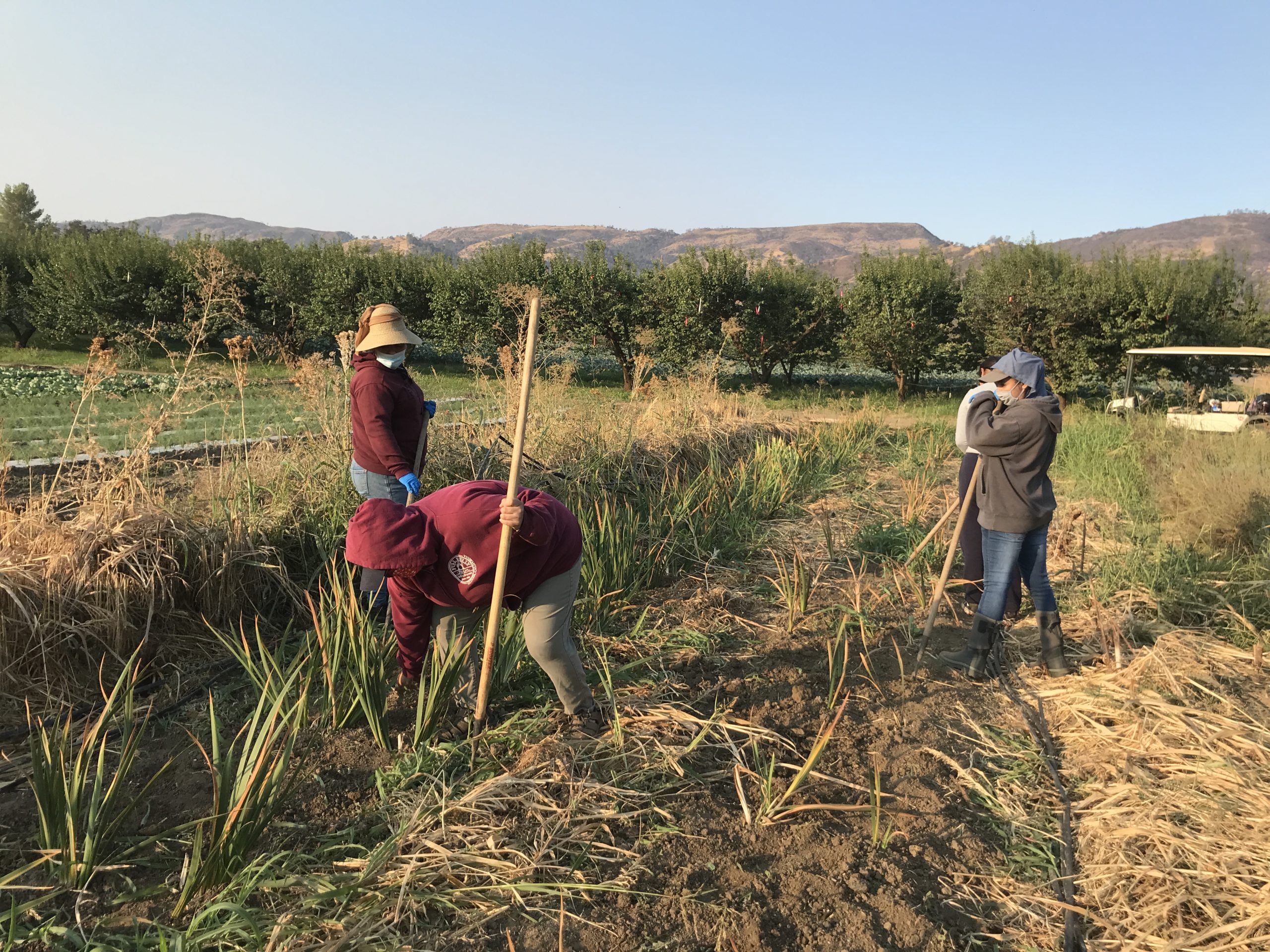
It definitely seemed a little quieter in “downtown Full Belly Farm” this past week. But the slightly lower level of hustle and bustle compared to a month or so ago was deceptive. Plenty of work was still being done, just different work.
Some folks were clearing out summer fields (collecting tomato stakes and winding up drip tape) and others helped out the regular kitchen crew cooking winter squash and making our 2021 batch of hot sauce! The major focus of the week was getting transplants and seeds in the ground. Andrew and others zipped around on tractors with seeders or transplanters on the back. Putting seeds in the ground is a solo act but transplanting (this week, mostly cabbage and lettuce) requires a team of folks to help. Once the tractor work is done, the plants need some help to get going. The irrigators come in next. The transplants need water to keep from drying out and seeds won’t germinate without it; most of our fall and winter crops are irrigated with sprinklers, which can cover 6 rows at a time and then are moved to the next set of rows.

Then there’s weeding, which is where most people were last week when they’d finished harvesting for the day. The term “weed” is subjective. There are some plants, like purslane, that is considered a weed by some and a nutrient-dense green to seek out to others. Plants from a prior crop that come up (i.e. last year’s sunflowers in a cucumber field) are technically also weeds. And there are some species, like Johnsongrass and bindweed which are universally reviled. We don’t want weeds because they compete with our plants for nutrients and if left unchecked, they’ll make harvesting a slow and tedious process. We want to remove them before they cause problems for this year’s crop and before they go to flower and produce seed to cause issues in future years. We remove them three main ways:
- Before the plants go in: by pre-irrigating, meaning watering the beds to germinate weed seeds, then going through with a tractor to remove the young weeds and then planting the desired crop
- Mechanical weeding: using a tractor to weed. Unlike in a garden, or with your hands, this doesn’t mean complete removal, roots and all. Instead you’re smothering the weed with dirt or cutting at the surface to kill it
- Hand weeding: removing weeds with hoes or hands (depending on the crop). It’s not easy work but it’s the only way to get weeds from between the plants in a row, when plants are too delicate or sprawling, to use a tractor, or for certain weed species
There are other ways that we deal with weeds, like mulching (for example plastic mulch like on the strawberries), flame weeding (on carrots) and using drip tape to reduce the area that gets that precious water. Cold winter temperatures will eventually kill off summer weed species (and will bring return of the winter weeds), but until then we need to help the plants out using a combination of methods. Regardless of the method, it means lots of work! There’s always weeding to be done, but at certain times of the year, other tasks take priority. As crops and seasons shift, we find ourselves with the time, and need, to prioritize weeding. A big thanks to our many weeders this past week! We’ll see the results of their hard work over many months to come.

–Elaine Swiedler, CSA Manager
